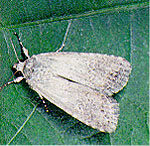
bassiana inside its host insect depends on its capability to penetrate the body wall (cuticle) and reach the hemocoel, followed by suppressing the host’s immune response (Götz 1991).

The successful invasion and propagation of B. bassiana produces and releases all its infective stages (conidiospores) in a single spell (Bartlett and Jaronski 1988 and Wraight et al. After the death of the infected host insects, B. bassiana had no harm on the non-target organisms (Goettel and Hajek 2001). Keller ( 2000) reported scarabs, weevils, locusts, and immature stages like caterpillars, larvae, pupae, and adults among hosts of B. Laboratory and field experimental results showed that this fungus is one of the most promising microbial control agents combating different insect pests (Lacey and Goettel 1995). It is a soil-borne fungus (Klingen et al. The fungus Beauveria bassiana (Balsamo) Vuillemin is known as a highly virulent entomopathogenic fungus (EPF) having a very wide range of insect hosts mostly agricultural pests (Tanada and Kaya 1993). Thus, the use of biological control became an important alternative, especially those bioagents that can be applied with the same machineries of insecticide application (spraying and dusting), i.e., entomopathogenic viruses, bacteria, and fungi. Modern pest control strategies are concerned with minimizing the use of chemical insecticides with their known hazards to the environment, beneficial fauna, and human health. Traditionally, chemical insecticides are used to control the pest. Among its plant hosts in Egypt are lettuce, cabbage, spinach, and sugar beet (El-Husseini et al. Larvae of the beet armyworm, Spodoptera exigua (Hübner) (Lepidoptera: Noctuidae), is considered one of the most damaging pests to many field crops and vegetables as a leaf feeder causing economic losses (Taylor and Riley 2008). exigua, in sugar beet fields in Fayoum Governorate, Egypt, resulted to a suppression in its larval populations through 5 applications by 54.5–70% in season 2016/2017 and 66.6–80% in season 2017/2018. bassiana (6 × 10 7 conidiospore/ml) for controlling the beet worm, S. The infected larvae survived the tested low concentrations more than 5 days and died later in the fifth larval instar. bassiana conidiospores than larvae of L 4. The larvae of L 3 were more susceptible to the treatment with B.

Larval mortality increased by increasing the conidiospore concentrations. A local isolate of the fungus Beauveria bassiana was tested against the beet armyworm Spodoptera exigua (Hübner) (Lepidoptera: Noctuidae) larvae reared on artificial diet.


 0 kommentar(er)
0 kommentar(er)
